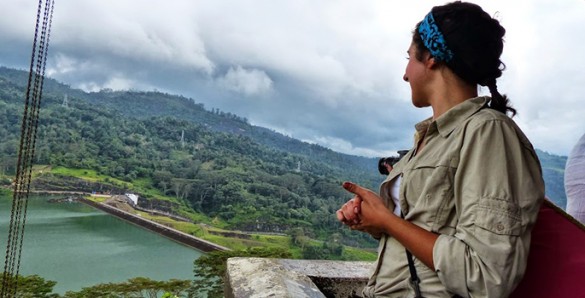
Food. Energy. Water.
Not only are these critical natural resources, they are also inextricably linked with each other. Water is needed to grow food. Energy is needed to pump water and to plant, grow and distribute food. Water is required to produce energy. And so on.
The trade-offs and synergies among the three are so important economically that it has a name: the food-energy-water nexus.

Researchers at Vanderbilt’s Institute for Energy and the Environment and Stanford’s Woods Institute for the Environment have developed a computer model that provides new insights into the food-energy-water nexus and can help resource managers around the world do a better job of weighing food and energy tradeoffs when water is scarce. It is described in an article published on Jan. 14 in Environmental Research Letters.
The new model adopts a standard economic approach called a “tradeoff frontier” to visualize the tradeoffs among food, energy and water in times of water scarcity: a condition that is becoming increasingly prevalent: The Organization for Economic Co-operation and Development (OECD) predicts that the number of people living in areas of water scarcity will more than double by 2050.
“A tradeoff frontier is a well known entity in economics,” said co-author George Hornberger. “It basically is the ‘guns-or-butter’ idea. If one has a certain amount to invest in either guns or in butter, a choice must be made – either lots of guns and no butter, lots of butter and no guns, or somewhere in between. All the possible choices make a curve of what one can get for different combinations of investment. This curve represents a classical tradeoff frontier in economics. Our innovation is to use the idea for water instead of dollars. That is, given a restricted amount of water there can be a choice between how much water is used for electricity production and how much water is used for irrigation.” Hornberger is the Craig E. Philip Professor of Engineering at Vanderbilt University.
The lead author, Debra Perrone – now a postdoctoral scholar at Woods Institute – began the study while she was a doctoral student at VIEE.
Perrone demonstrated the value of this approach by examining the relationships among food, energy and water use in Sri Lanka. “[lquote]Water is the driving force behind the interdependence of Sri Lanka food, energy and water sectors[/lquote],” she explained.
As a developing country with a growing population, Sri Lanka’s energy and food demands are steadily increasing. During dry periods, water managers face a choice of diverting water to irrigate paddies for rice production or to let water flow through turbines of major hydroelectric plants. While there is still some paddy production and some hydroelectricity production despite water diversions, these diversions make a large impact.
Determining which tradeoffs to take requires consideration of the costs and benefits of what it means to cut down production of one resource and import it instead. For example, cutting down on hydroelectricity and importing coal is expensive and results in air pollution. Alternately, Sri Lanka’s food production is tied strongly to a cultural attachment to paddy irrigation and a political focus on rice self-sufficiency. Choosing to import rice would also make the country reliant on the volatile rice market.

In addition to assessing various production levels of food and energy, the model is useful in identifying political and social constraints that move production away from what is feasible with existing technology. For example, production of energy and food might not reach maximum output because farmers decide to plant less rice to reduce the risk of large economic losses due to crop failure during times of drought.
The researchers’ analysis of Sri Lanka’s food, energy and water systems indicates that actual water management leans closer to favoring paddy production even though the economic value of rice is much less than electricity production. Their results help show how people value water in intangible ways, and may be used to inform future studies that aim to price water.
The agriculture and energy sectors are often the two largest users of water across the globe, making Sri Lanka’s food, energy and water challenges reflective of similar problems in other countries. As climate change exacerbates water scarcity and competing demands between food and energy production become more prominent, resource managers worldwide can use the study’s concept to assess tradeoffs among these resources. For example, California has high water demands from both the thermoelectric sector and the irrigation sector, and the state has been facing a multi-year drought.
Related materials: